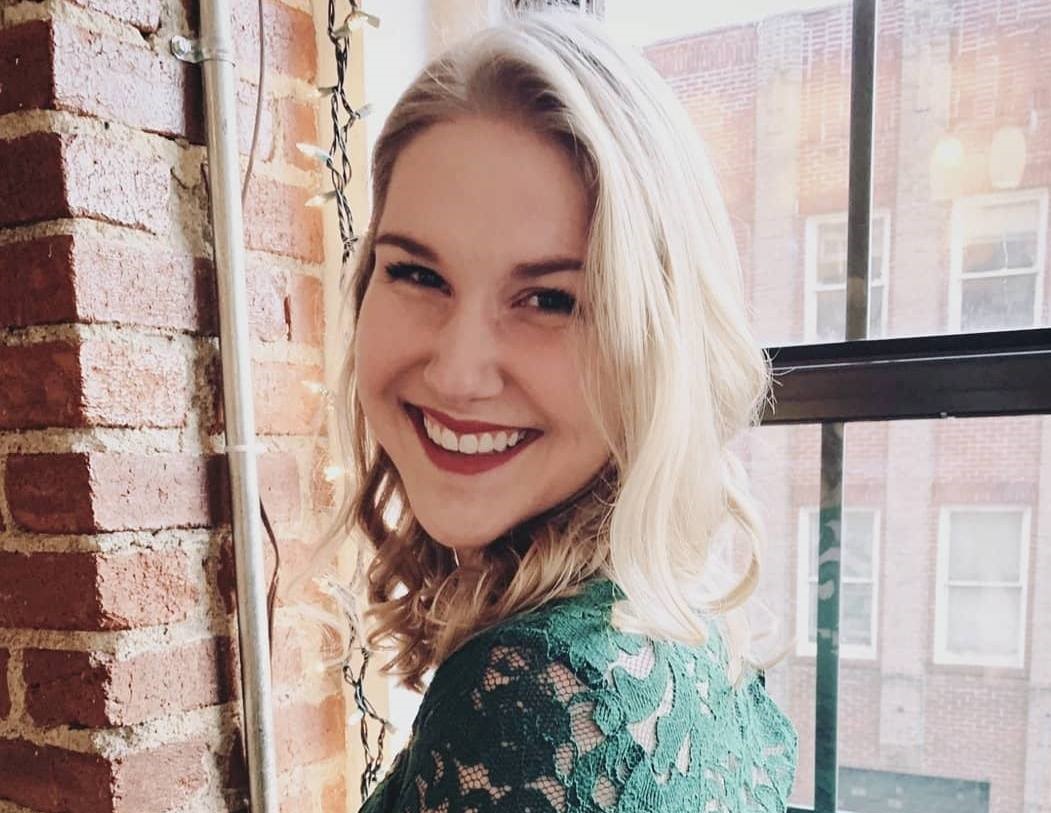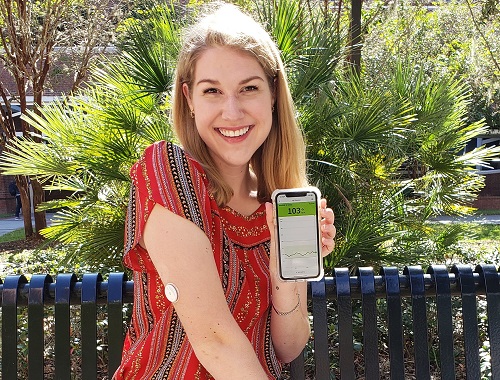
This educational content is made possible with support from Abbott, the makers of the FreeStyle Libre 2. Editorial control rests solely with Breakthrough T1D.
Hannah M. was diagnosed with type 1 diabetes (T1D) at 3 years old in 2000 and remembers how afraid she was of having to prick her finger. She had the tale-tell signs, including extreme thirst and fatigue, and ending up going to the hospital where she was eventually diagnosed.
“My life changed within a day,” says Hannah, who remembers being so young at the time that the support of her parents was critical in helping her maintain control over her blood sugar levels. When she tried her first continuous glucose monitor (CGM) in elementary school, Hannah went along with her classmates’ observations that her new tech made her appear like a robot!
“I thought I was so cool that I got to be like a robot, and the new technology wasn’t scary at all. I was excited because it made taking care of myself a lot easier.”
The device that made Hannah’s classmates think she turned into a robot was a CGM, but for many CGMs are still a foreign term. So, what exactly are CGMs?
CGMs are FDA-approved devices that provide insight into glucose levels 24 hours a day. They display information about glucose direction and speed while providing additional information to help with a user’s diabetes management. One of the most crucial benefits of using a CGM is having the device actively monitor your blood-glucose levels at night and alerting you of an approaching high or low.
Fast forward to now, where Hannah is currently a graduate school student with an extremely busy schedule. Hannah wears the FreeStyle Libre 2, a CGM device manufactured by Abbott, and feels that 20 years later, although she still has T1D, she is thriving.
“These devices are life-changing because they affect the whole way you take care of yourself.”
Where Hannah may have skipped eating particular foods, wearing a CGM has given her more control to make the choices she wants without feeling restricted. She can also give her full attention to her studies without having to take breaks for manual finger pricks.
 “As a doctoral student, my days are packed with clinical hours, research, classes, and studying, so being able to quickly scan my sensor with my phone and know immediately my glucose level is an amazing time-saver,” Hannah said. “It has also significantly improved my ability to keep my glucose in range. The ease of use with the FreeStyle Libre 2 app means I can instantly see what my glucose is and say ‘yes’ to snacks that are offered, a more strenuous workout, and/or a good night’s sleep based on the glucose level on my phone.”
“As a doctoral student, my days are packed with clinical hours, research, classes, and studying, so being able to quickly scan my sensor with my phone and know immediately my glucose level is an amazing time-saver,” Hannah said. “It has also significantly improved my ability to keep my glucose in range. The ease of use with the FreeStyle Libre 2 app means I can instantly see what my glucose is and say ‘yes’ to snacks that are offered, a more strenuous workout, and/or a good night’s sleep based on the glucose level on my phone.”
“I love not having to constantly think about if my glucose is okay, because I’ll know automatically. I can just be a student, and not have to think about anything else,” she added.
As technology progresses so do the features of CGMs, making glucose monitoring even more seamless. One of Hannah’s favorite new features is the ability to control the alarms on her device where she can set her own range for high and low glucose levels.
“One of my favorite parts about the FreeStyle Libre 2 app is that I can set my own range for my high and low alarms,” Hannah said. “Since I always have my phone with me, it is so much easier to make sure I am in range because I can scan any time and respond quickly if I get an alarm that I am going out of range. I can catch my highs and give some insulin before I am too far out of range and eat a quick snack or put a temporary basal on my insulin pump to prevent a serious low.”
“I can also temporarily turn off the alarm function during class so that my CGM doesn’t go off while I’m giving a presentation,” she added.
One tip that Hannah has for other CGM users or those who are thinking about using a CGM: “I’ve learned how helpful it is to have a routine. It’s good for maintaining my glucose levels and I’m able to make better decisions.”
If you want to learn more about the variety of CGMs available and their features, visit our CGM fact-sheet. CGMs also require a prescription through your health care provider, so if you have any questions about coverage of your T1D supplies or devices like a CGM, visit our Health Insurance Guide.
Being diagnosed at the young age of 3, Hannah tells us that she doesn’t remember a life without T1D, but she’s grateful that technology is allowing her to live a life less burdened by the disease.
“It doesn’t define me, but just something I happen to live with. I can still do everything I want to do to the fullest.”